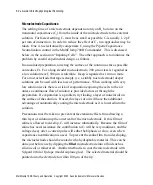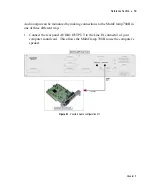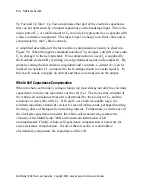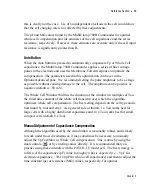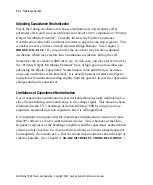
76
•
Reference Section
Figure 5.5B shows how bridge balance is done in practice. When the current is
stepped to a new value (top), there is a rapid voltage step on V
p
due to the ohmic
voltage drop across the microelectrode (middle). Following this instantaneous step,
there is a slower rise in V
p
largely due to the membrane time constant of the cell.
Correct adjustment of the bridge amplifier removes the instantaneous step, leaving
the corrected V
m
trace (bottom). Although this adjustment is done with a step
current injection, the correction remains valid for any arbitrary waveform of
injected current, provided the microelectrode maintains a constant resistance.
Figure 5.5.
Schematic bridge balance circuit and adjustment procedure.
Bridge Balance in the Bath
Some investigators like to set Bridge Balance in the bath, before attempting to
impale cells. This is to make it easier to see when a cell has been penetrated.
Check the Tuning checkbox and set the parameters to -1 nA and 50 Hz. Observe
the Membrane Potential on Primary Output. Press the Auto Bridge Balance button;
the fast voltage steps seen at the start and finish of the current step should be
MultiClamp 700B Theory and Operation, Copyright 2005 Axon Instruments / Molecular Devices

